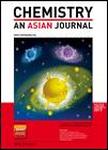版权所有:内蒙古大学图书馆 技术提供:维普资讯• 智图
内蒙古自治区呼和浩特市赛罕区大学西街235号 邮编: 010021

作者机构:Univ Calcutta Dept Chem 92 APC Rd Kolkata 700009 India Womens Coll Dept Chem Kolkata India Barrackpore Rastraguru Surendranath Coll Dept Chem Kolkata 700120 India
出 版 物:《CHEMISTRY-AN ASIAN JOURNAL》 (Chem. Asian J.)
年 卷 期:2025年第20卷第6期
页 面:e202401328页
核心收录:
基 金:Ministry of Mines University Grants Commission (ASM) Met4-14/19/2021
主 题:Smart Luminescent materials Chemiluminescence Biosensors Quantum dots and Environmental sensors Photoluminescence and bioimaging
摘 要:Smart luminescent materials have drawn a significant attention owing to their unique optical properties and versatility in sensor applications. These materials, encompassing a broad spectrum of organic, inorganic, and hybrid systems including quantum dots, organic dyes, and metal-organic frameworks (MOFs), offer tunable emission characteristics that can be engineered at the molecular or nanoscale level to respond to specific stimuli, such as temperature, pH, and chemical presence. This adaptability makes them crucial in developing advanced sensor technologies for environmental monitoring, biomedical diagnostics, and industrial applications with the help of the luminescence mechanisms, such as fluorescence, phosphorescence, and upconversion. Recent advancements have been driven by the integration of nanotechnology, which enhances the sensitivity and selectivity of luminescent materials in sensor platforms. The development of photoluminescent and electrochemiluminescent sensors, for instance, has enabled real-time detection and quantification of target analytes with high accuracy. Additionally, the incorporation of these materials into portable, user-friendly devices, such as smartphone-based sensors, broadens their applicability and accessibility. Despite their potential, challenges remain in optimizing the stability, efficiency, and biocompatibility of these materials under different conditions. This review provides a comprehensive overview of the fundamental principles of smart luminescent materials, discusses recent innovations in their use for sensor applications, and explores future directions aimed at overcoming current limitations and expanding their capabilities in meeting the growing demand for rapid and cost-effective sensing solutions.